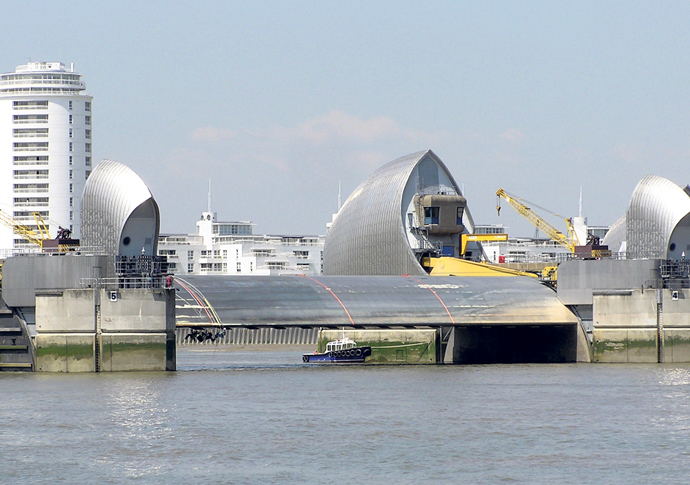Flood risk is real
Friday, 24th January 2020

Thames Barrier
• AUSTRALIA has been burning, apparently even in pristine New Zealand the snow was grey with ash from the fires. But more people have been killed by the floods in Indonesia.
Somehow disasters in third world countries don’t get so much news coverage, though the global south is so much more vulnerable to climate change.
The chants of “What do we want? Climate justice. When do we want it? Now” at Extinction Rebellion demonstrations are a simplified way of saying that wealthy countries which have benefited from fossil-fuelled economies (the UK being the first) have to take responsibility and pay out.
Reluctance to do so was one of the key reasons for the failure of the United Nations Climate Change Conference, COP 25 in December.
John Sadler’s brilliant drawings (Climate Capital, in Review) are imagining what might happen in London when the Thames Barrier fails.
I am old enough to remember before it was completed. There were sirens and maps of the flood area. Without it, walls along the embankment would have to be lamp-post height.
In its first decade of operation the barrier only closed 10 times. In the last 10 years it has closed 74 times.
Green Party Greater London Authority member Caroline Russell, chair of the London Assembly environment committee, says that 57 tube stations are at high risk of flooding.
The disruption to daily lives caused by Extinction Rebellion actions are minor compared with the disruption that will bring.
Tipping points being reached in Arctic and Antarctic melting are likely to bring much faster changes in sea level than previously calculated. And we have already seen the results of unprecedented, intense rainfall.
There will be climate refugees within Britain just as there are in Jakarta, a capital city which is actually being abandoned by the government in favour of a new site. Does this put a new spin on the plans to move the House of Lords?
DOROTHY MARDEN
Extinction Rebellion Member